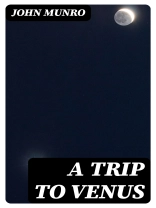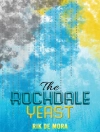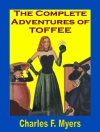In ‘A Trip to Venus, ‘ John Munro invites readers on a fantastical journey through the cosmos, effortlessly blending elements of science fiction and adventure. Set in the late 19th century, the narrative captures the Victorian fascination with space exploration and technological advancement, mirroring the period’s optimism about the future. Munro’s vivid and imaginative prose paints a vibrant picture of Venus, incorporating speculative elements that facilitate rich discussions on astronomy, evolution, and utopian societies, all while maintaining a light-hearted and engaging tone. John Munro, a Scottish author and a notable figure in the realm of early science fiction, draws upon his background in science and his keen interest in contemporary advancements. His experiences and prevailing curiosity about the possibilities of space travel deeply influenced his writing. By weaving scientific knowledge with imaginative storytelling, Munro effectively captured the zeitgeist of his era, reflecting society’s hopes and fears surrounding technological progress. This novel is highly recommended for readers intrigued by the interplay of science and fiction, as well as those exploring early speculative literature. Munro’s work not only entertains but also serves as a fascinating historical lens through which to view human aspirations in the face of the unknown.
Giới thiệu về tác giả
John Munro (1849–1930) was a Scottish author and engineer, best known for his foray into the realm of science fiction with his novel ‘A Trip to Venus’ published in 1897. With a background that blended both literary proclivities and a scientific mind, Munro’s work in ‘A Trip to Venus’ reflects an early fascination with the possibilities of space travel, predating the more widely recognized works in the genre by pioneers such as H.G. Wells and Jules Verne. Munro’s literary style is distinctly Victorian, characterized by an attention to detail and a didactic tone that aimed to both educate and entertain his readers. His novel takes the form of a fantastical narrative, combining elements of adventure with an optimistic perspective on technological progress and human endeavor. While ‘A Trip to Venus’ did not achieve the notoriety of some of his contemporaries’ works, it remains a noteworthy contribution to the canon of early science fiction literature, offering insight into the zeitgeist of the late 19th-century scientific optimism and its reflection on Victorian society. Munro’s legacy in the literary world, while perhaps not as extensive as some of his peers, nonetheless adds a fascinating layer to the history of science fiction as a genre, and his work continues to be of interest to scholars studying the evolution of speculative fiction.












